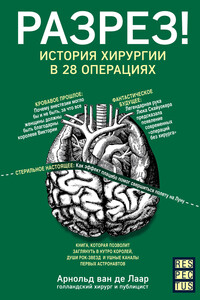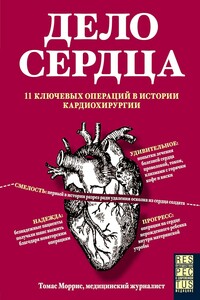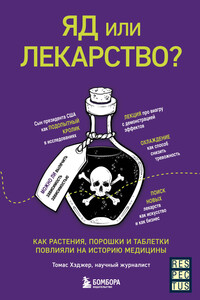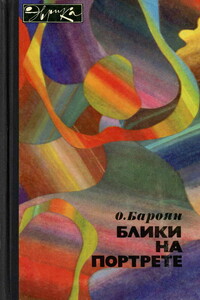55:189–208. Тревожно, что результаты, на которых Толман основывал свою теорию, в то время не могли быть воспроизведены. См., например: Gentry, G., et al. (1948), Journal of Comparative and Physiological Psychology 41:312–18.
29. O’Keefe, J. (2014), The Nobel Prizes 2014, pp. 275–307.
30. O ’Keefe, J. and Dostrovsky, J. (1971), Brain Research 34:171–5, p. 174.
31. Yartsev, M. and Ulanovsky, N. (2013), Science 340:367–72.
32. Hafting, T., et al. (2005), Nature 436:801–6; Moser, E., et al. (2008), Annual Review of Neuroscience 31:69–89.
33. O ’Keefe (2014); Moser, E. (2014), https://www.nobelprize.org/prizes/medicine/2014/edvard-moser/lecture; Moser, M.-B. (2014), https://www.nobelprize.org/prizes/medicine/2014/may-britt-moser/lecture.
34. Maguire, E., et al. (1998), Science 280:921–4; Maguire, E., et al. (2000), Proceedings of the National Academy of Sciences USA 97:4398–403. О том, как не удалось обнаружить такой эффект у обычных водителей, см. Weisberg, S., et al. (2019), Cortex 115:280–93.
35. Butler, W., et al. (2019), Science 363:1447–52; Baraduc, P., et al. (2019), Science 363:635–9.
36. Omer, D., et al. (2018), Science 359:218–24; Danjo, T., et al. (2018), Science 359:213–18.
37. Wilson, M. and McNaughton, B. (1994), Science 265:676–9.
38. Olafsdottir, H., et al. (2015), eLife 4:e06063; Stachenfeld, K., et al. (2017),Nature Neuroscience 20:1643–53.
39. Schuck, M. and Niv, Y. (2019), Science 364:eaaw5181; Liu, Y., et al. (2019), Cell 178:640–52.
40. Eichenbaum, H. (2016), Learning and Behavior 44:209–22, p. 213.
41. Lisman, J., et al. (2017), Nature Neuroscience 20:1434–47.
42. Brodt, S., et al. (2018), Science 362:1045–8.
43. Teyler, T. and DiScenna, P. (1986), Behavioral Neuroscience 100:147–54.
44. Tanaka, K., et al. (2018), Science 361:392–7.
45. Igarashi, K., et al. (2014), Nature 510:143–7.
46. Eichenbaum, H., et al. (1983), Brain 106:459–72.
47. Dahmani, L., et al. (2018), Nature Communications 9:4162; Bao, X., et al. (2019), Neuron 102:1066–75.
48. Knierim, J. (2015), Current Biology 25:R1116–R1121.
49. Kandel (2006), p. 134.
50. Hodgkin, A. and Huxley, A. (1952), Proceedings of the Royal Society of London B 140:177–83.
51. Kandel (2006), p. 147.
52. Hesse, R., et al. (2019), https://www.biorxiv.org/content/10.1101/ 631556v1; Asok, A., et al. (2019), Trends in Neuroscience 42:14–22.
53. McConnell, J., et al. (1959), Journal of Comparative and Physiological Psychology 52:1–5; Travis, G. (1981), Social Studies of Science 11:11–32.
54. Morange, M. (2006), Journal of Bioscience 31:323–7.
55. Byrne, W., et al. (1966), Science 153:658–9.
56. Malin, D. and Guttman, H. (1972), Science 178:1219–20.
57. Ungar, G., et al. (1972), Nature 238:198–202.
58. Stewart, W. (1972), Nature 238:202–9.
59. Wilson, D. (1986), Nature 320:313–14.
60. Irwin, L. (2007), Scotophobin: Darkness at the Dawn of the Search for Memory Molecules (Plymouth: Hamilton); Setlow, B. (1997), Journal of the History of the Neurosciences 6:181–92.
61. Nye, M. (1980), Historical Studies in the Physical Sciences 11:125–56.
62. Shomrat, T. and Levin, M. (2013), Journal of Experimental Biology 216:3799–810.
63. Bliss, T. and Lomo, T. (1973), Journal of Physiology 232:331–56.
64. Lomo, T. (2017), Acta Physiologica 222:e12921.
65. Cooke, S. and Bliss, T. (2006), Brain 129:1659–73.
66. Bliss, T. and Collingridge, G. (1993), Nature 361:31–9.
67. Cooke and Bliss (2006).
68. Nabavi, S., et al. (2014), Nature 511:348–52; Titley, H., et al. (2017), Neuron 95:19–32.
69. Ryan, T., et al. (2015), Science 348:1007–13.
70. Tonegawa, S., et al. (2018), Nature Reviews Neuroscience 19:485–98.
71. Crick, F. (1982), Trends in Neuroscience 5:44–6.
72. Roberts, T., et al. (2010), Nature 463:948–52; Hayashi-Takagi, A., et al. (2015), Nature 525:333–8.
73. Adamsky, A., et al. (2018), Cell 174:59–71.
74. Доступны и другие формы обучения – см. Tonegawa et al. (2018).
75. Han, J., et al. (2009), Science 323:1492–6.
76. Ramirez, S., et al. (2013), Science 341:387–91.
77. Redondo, R., et al. (2014), Nature 513:426–30.
78. Ramirez, S., et al. (2015),







